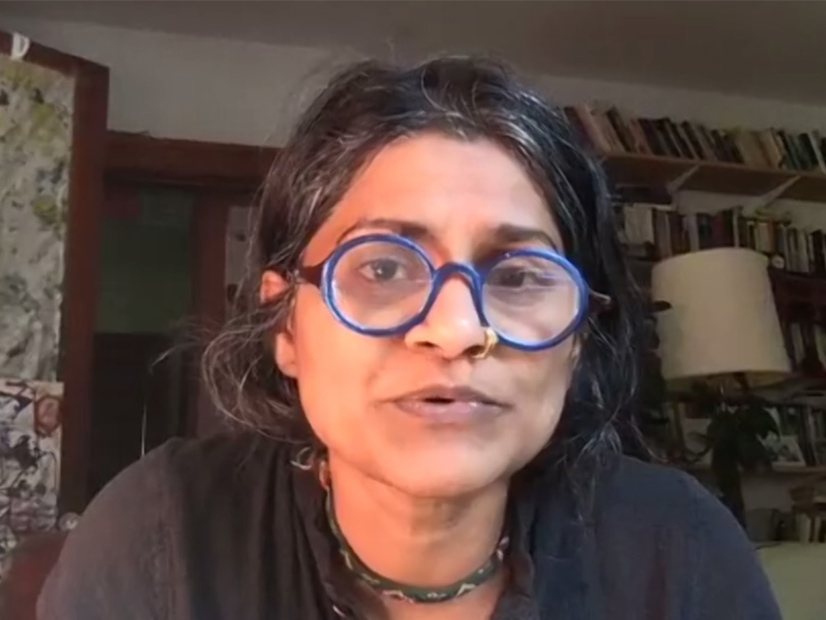The Vermont Climate Council is trying to find a way to engage meaningfully with the state’s most vulnerable communities and still deliver a climate plan on time in December.
“This rocket-fueled schedule that we have right now … was designed with very little appreciation for the very thing that we’re now struggling to … open ourselves up to, which is what this work looks like from the perspective of people who have not always had a seat at our proverbial table,” Vermont Department of Public Service Commissioner June Tierney said at a council meeting Monday.
Under Vermont’s 2020 Global Warming Solutions Act, the council must adopt a plan by Dec. 1 for achieving the state’s greenhouse gas emissions requirements while advancing equity.
The council is preparing this summer to enter a formal public engagement process, which is guided by a just transitions subcommittee. But some council members are concerned that the outreach timeline will not provide the dialogue needed to inform the climate plan in a way that produces environmental justice.
Tierney suggested that the council consider two simultaneous pathways for the legislative mandates to address climate change quickly and ensure a just transition for vulnerable citizens.
First, she said, the council could design an ongoing public engagement process that is “truly solicitous and receptive and engaging.” At the same time, she added, the council can identify “no regrets policies” that can be taken in the near term with a high degree of confidence and are “beneficial to all regardless of who you are in our society.”
Tierney also urged the council to consider taking its concerns on timing to the state’s legislators.
“If we are not feeling comfortable with the power that we’re wielding because we’re not sure that we’re bringing everybody into this conversation, at some point we have to … stand up and say so,” she said.
Last month the council discussed delaying the release of the plan, but it made no decision on that front. It is now considering formalizing its concerns in a letter to legislative leadership. (See VT Climate Council May Delay Release of Action Plan.)
Equity Issues
In Vermont, environmental justice is harder to define than in other states, according to Bindu Panikkar, assistant professor at the University of Vermont’s Rubenstein School for Environment and Natural Resources. The state is 94% white and ranks as one of the least polluted in the country.
But Vermont, Panikkar said during the council meeting, has pockets of environmental and social justice issues that it has “struggled to address.”
Her research on environmental health disparities found that Black and Indigenous populations, people of color and people with limited English proficiency in the state are “significantly” more at risk from air pollution, polluting sites and heat vulnerability. Nonwhite communities, she said, are seven times less likely to have solar panels compared to white groups. In addition, people below the poverty line and people of color are less likely to have their homes weatherized.
“Environmental and health disparities are prominent in BIPOC and low-income populations in Vermont, but the inequities are preventable,” she said. “We need state support and resources to carry out this transformative work.”
Funding Outlook
The environmental justice issues that the council is working to address now are going to inform how the state spends federal funds from the American Rescue Plan Act, according to Agency of Administration Secretary Susanne Young.
Funding, she said during the council meeting, will be dedicated over time to economic recovery and climate change. But federal guidance, she added, specifically directs states to address equity in their planning for the funds.
Vermont legislators adjourned their current session Friday with passage of a budget that included a statement of intent to allocate $250 million to climate action work over the next few years, Agency of Natural Resources Secretary Julie Moore said.
The FY22 budget includes a $65 million commitment for climate-related programs, with $50 million of that coming from the federal stimulus package. Weatherization assistance accounts for $18 million of the budget, and $7 million will go to electric vehicle incentives, Moore said. Another $10 million will be used to invest in community-scale renewable energy generation projects, and $5 million is available as incentives for consumers to transition from fossil fuels to heat pumps or modern wood heating. Additional funding will be used for conservation and hazard mitigation, among other things.
Gov. Phil Scott has signaled his support for the budget, even though it did not align with all his recommendations for the federal funds. The legislature will hold a veto session in mid-June.



